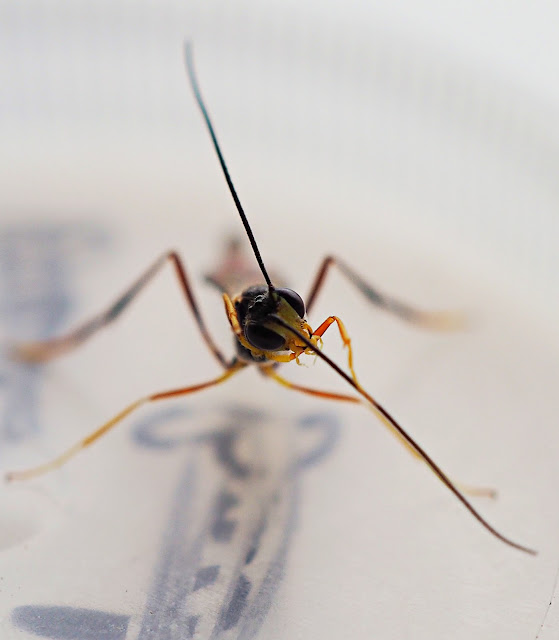... is a good quality. Carol Dweck's work played a large part in my professional life and in our parenting. We were discussing it's implications the other day in a reflective kind of a way. If you want to know more the book is Mindset by Carol S. Dweck, there are lots of interpretations of Carol's work but I was introduced to her work by Barrie Hymer, emeritus professor of psychology in education at Cumbria University https://barryhymer.wordpress.com/. I went to an in-service day, probably the most important in-service training of my professional life; well more than that as Louise and I applied the ideas to our parenting, which we think has turned out pretty well: other opinions my exist...... (Ha, ha, ha!)

I'm applying growth mindset practice to my ongoing struggles to identify Hymenoptera, particularly the pesky wee Campopleginae which have turned up in the pheromone traps. I'm not sure how many hours I've spent on these animals now but it is getting on for a whole day and night I suspect, not in one go I hasten to add.
The advantage of this perseverance is that I am learning the morphology and terminology related to Hymenoptera, and particularly the Ichneumonoidea as I go, and it is sticking, a good bit. Much help is being enlisted online, again thank you to those who are helping, it is much appreciated.
Anyway, here's a pile of photographs of the male Campopleginae which were proposed as Tranosemella praerogator. It was a big help getting steers to this point.
I've run the males through the Transosemella key and they don't go, the propodem carinae look about right but the leg colours, specifically the coxae, trochanters and trochantellas are the wrong colour. Information received (thanks MS) suggests that in the NHM there are possibly three UK species additional to the key, so Tranosemella sp is where we get to. Now to look more carefully at the female....
 |
| Tranosemella sp male legs. |
 |
Male 1 head and mesoscutum dorsally.
|
 |
Propodeum male 2 showing the carinae (raised ridges).
|
 |
Teath and edge of clypeus.
|
 |
Slightly concave clypeus, scape is yellow not predominantly black, and there seems to me a subtle difference in the eye margin compared to the images of the reference specimen.
|
 |
Male 1
|
 |
Male 3
|
 |
Tergites latero-dorsally.
|
 |
Hind tibia and spurs.
|
 |
Left wings, male 3.
|
I'll have a detailed look at the female, maybe later today or in a day or so. Although that looks superficially similar it has been suggested that it may be a Phobocampe species.
The pheromone traps produced another Ichneumonoidea today.
 |
Ichneumonoidea 18th May, pheromone trap.
|
So as President Jed Bartlett would have asked, but this above means I know already, "What's next?"

















No comments:
Post a Comment